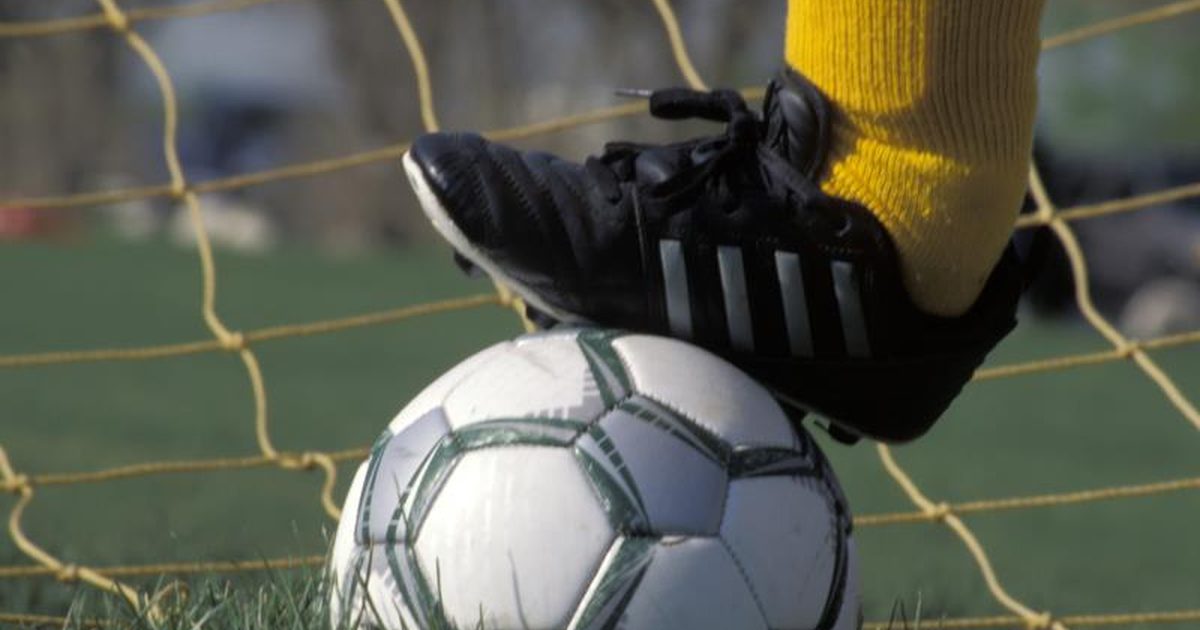Soccer shoe bending stiffness significantly alters game-specific physiology
The purpose of this study was to investigate the effects of soccer shoes with differing bending stiffness on physiological and performance variables in a game-like situation using a continuous field-based work protocol (the Soccer-25). It was hypothesized that the medium stiffness soccer shoe would have the optimum bending stiffness to elicit (1) physiological benefits, and (2) performance benefits.
 The results of this study show that soccer shoe forefoot bending stiffness significantly affects physiological variables in a game-like situation. The medium-stiffness shoe exhibited lower rate of oxygen consumption, heart rate, rate of energy expenditure and ventilation compared to the high-stiffness shoe. Drill completion times did not differ significantly between the shoe conditions. Finally, shoe stiffness may have to be modified to different athletes’ body weights in order to maximize the benefit of applying such a technology.
The results of this study show that soccer shoe forefoot bending stiffness significantly affects physiological variables in a game-like situation. The medium-stiffness shoe exhibited lower rate of oxygen consumption, heart rate, rate of energy expenditure and ventilation compared to the high-stiffness shoe. Drill completion times did not differ significantly between the shoe conditions. Finally, shoe stiffness may have to be modified to different athletes’ body weights in order to maximize the benefit of applying such a technology.
Soccer is one of the world’s most popular sports, with an estimated 270 million people actively involved in the game worldwide, according to the Federation Internationale de Football Association (FIFA). Successful performance in a soccer game is dependent on a number of factors, including personal fitness, skill level, and strategy. Soccer shoe construction can also affect biomechanical and performance variables. For example, stud geometry has been shown to affect sprinting performance and instep kick ball velocity (Sterzing & Hennig, 2008; Sterzing, Meuller, Hennig, & Milani, 2009).
Soccer shoe mass has also been shown to affect joint kinematics, with heavier shoes resulting in slower foot linear velocity and greater knee flexion of the kicking leg at ball contact (Moschini & Smith, 2012). However, other studies showed that soccer shoe mass did not alter sprint performance (Sterzing et al., 2009) or instep kick ball velocity (Sterzing & Hennig, 2008). Another shoe property that has been studied is the frictional properties of shoe upper material, which has shown trends for affecting instep kick ball velocity (Sterzing & Hennig, 2008).
Bending stiffness is another modifiable shoe characteristic that can affect performance. Altering sprinting shoe bending stiffness has been shown to improve sprinting performance (Stefanyshyn & Fusco, 2004; Worobets & Wannop, 2015) and jump height (Stefanyshyn & Nigg, 2000). It is suggested that the performance enhancements observed with stiffer midsoles were the result of a reduction in energy loss at the metatarsal phalangeal joint due to a reduction in midsole bending (Nigg & Segesser, 1992; Stefanyshyn & Nigg, 2000).
Notably, however, it was not the stiffest shoe in the study by Stefanyshyn and Fusco (2004) that showed the greatest improvement in sprinting time, but rather a mid-level stiffness shoe. The authors of this study suggested that stiffer shoes may result in an anterior shift of the pressure, thus increasing the lever arm and moments about the ankle joint. As a result, the athletes may not have had strong enough plantarflexor muscles to generate adequate moments in the high-stiffness shoes, thus explaining a reduction in performance (Stefanyshyn & Fusco, 2004).
While some promising biomechanical and performance benefits have been identified through shoe modifications in the above studies, this research has been conducted entirely on isolated drills or movements, such as an instep kick or a short-distance sprint, often in a aboratory-based environment. However, 90-minute soccer games consist not only of instep kicks and sprinting, but also of walking, jogging, passing, tackling, and cutting manoeuvres (Burgess, Naughton, & Norton, 2006).
Furthermore, a recent meta-analysis showed that during a soccer game, players are working at 70% 80% of their maximal rate of oxygen consumption and at 80% 90% of their maximal heart rate (Alexandre et al., 2012). As the testing setups in previous studies do not closely resemble soccer games, it is not known whether small changes in performance measured during isolated drills will translate to true benefits to the player during a game situation.
In addition to biomechanical and performance variables, physiological variables, such as rate of oxygen consumption, can also be used to assess footwear conditions. Thus far, the majority of research with physiological variables has investigated footwear properties during running. For example, heavier shoes have been shown to increase the rate of oxygen consumption (Divert et al., 2008; Franz, Wierzbinski, & Kram, 2012; Frederick, 1984).
Research has varied regarding the effect of cushioned shoes on running economy, with studies showing increases (Bosco & Rusko, 1983), decreases (Worobets, Wannop, Tomaras, & Stefanyshyn, 2014), and no change (Nigg, Stefanyshyn, Cole, Stergiou, & Miller, 2003) in rate of oxygen consumption with softer shoes. Shoe bending stiffness has also been shown to alter rate of oxygen consumption in running.
Roy and Stefanyshyn (2006) reported a ‘U-shaped’ relationship between shoe stiffness and rate of oxygen consumption, where the shoe with the mid-range stiffness showed a lower rate of oxygen consumption than the control or stiffest shoes. To the author’s knowledge, only one study has investigated the effect of a shoe property (shoe weight) on physiological variables during sport, as opposed to running or walking (Vienneau, Tomaras, Nigg, & Nigg, 2015), and found significant physiological benefits for the lighter shoe in the sport of basketball.
Soccer shoe bending stiffness significantly alters game-specific physiology in a 25-minute continuous field-based protocol, Hendrik Enders, Jordyn Vienneau, Elias K. Tomaras, Harald Koerger, Sandro Nigg & Benno Nigg. Footwear Science Vol. 7, Iss. sup1, 2015. DOI:10.1080/19424280.2015.1038626
